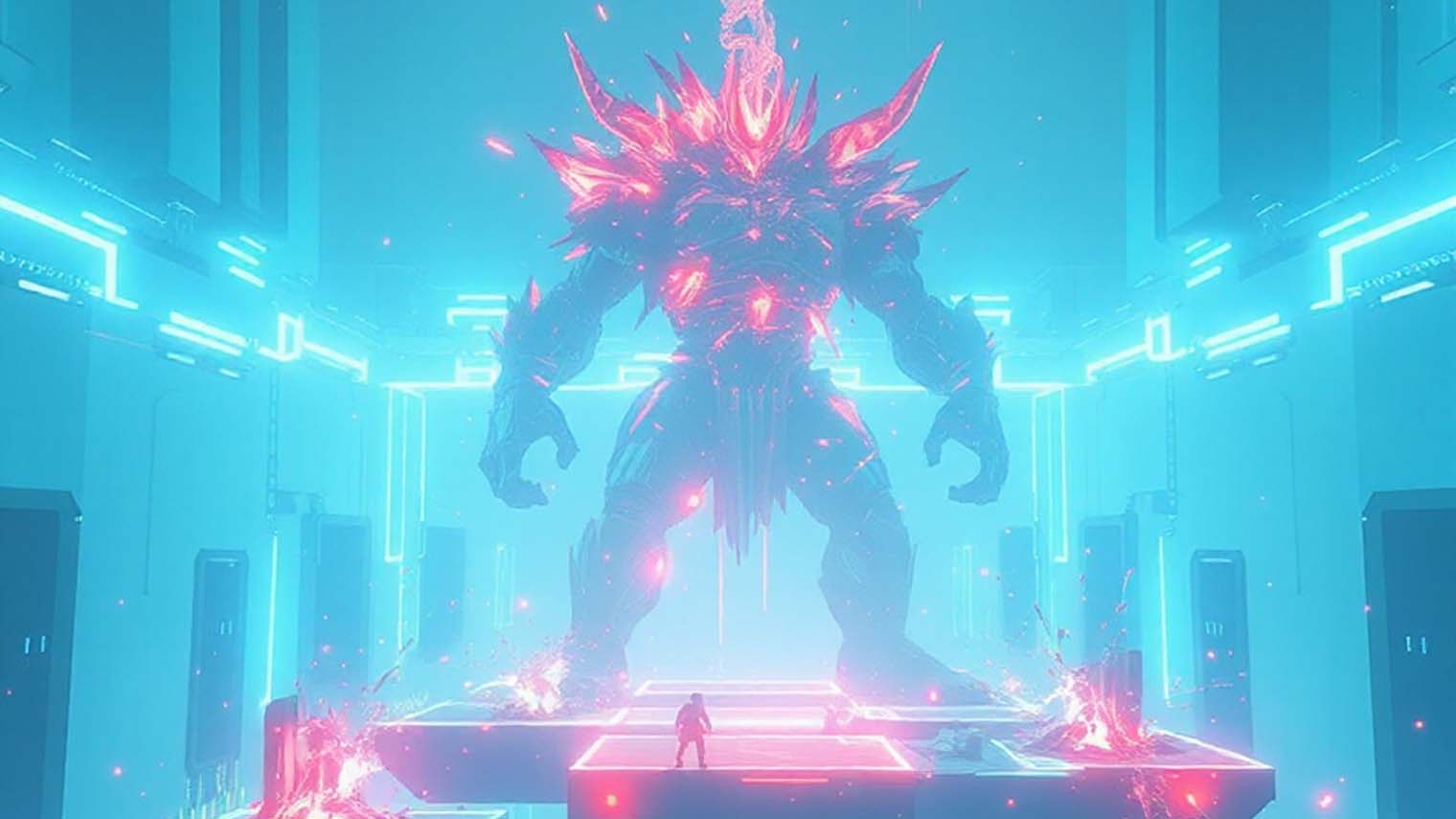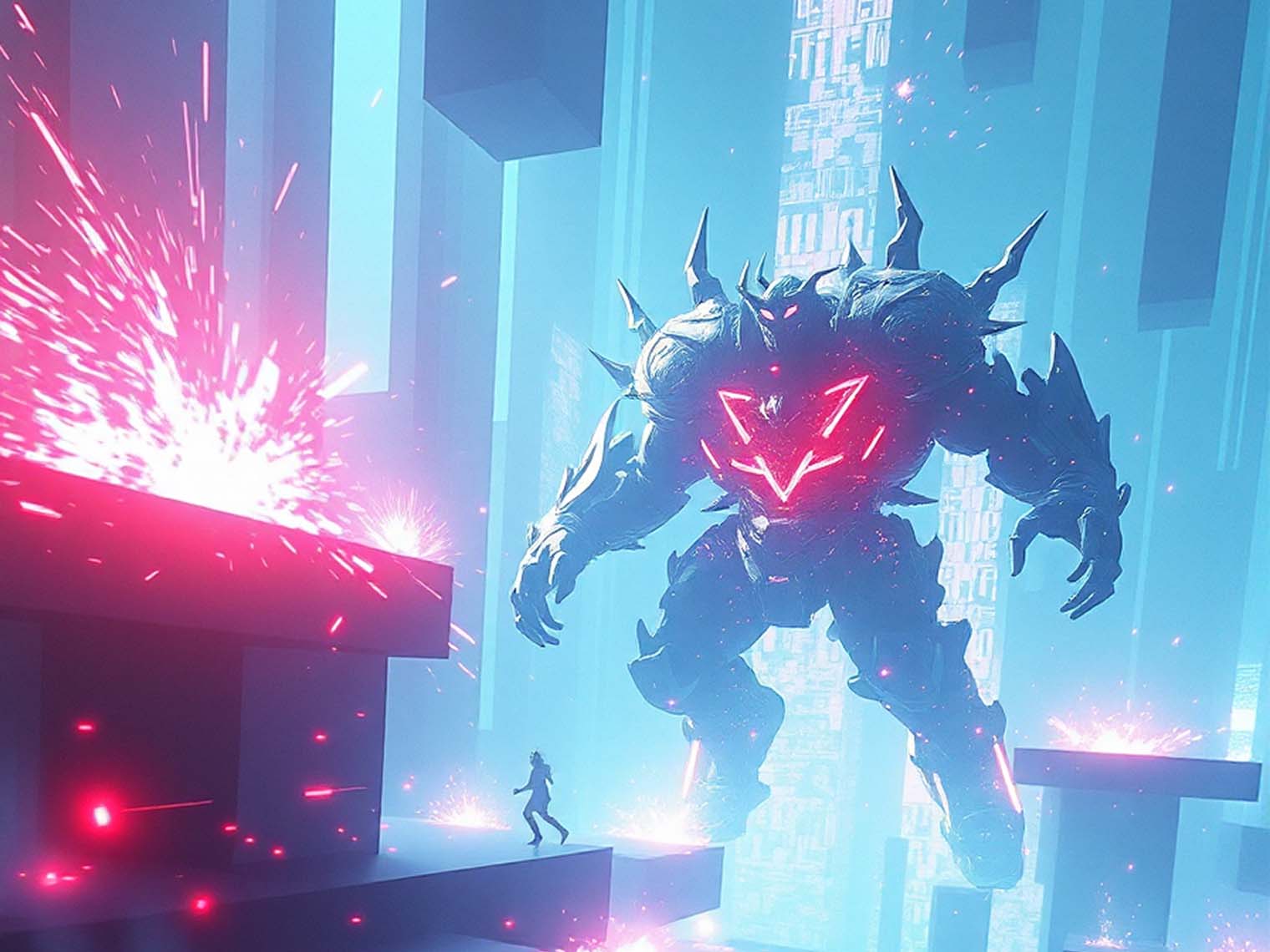
The Beauty of Imperfection: Embracing Light Glitch Art
In a digital world often obsessed with pixel-perfect precision and sterile interfaces, there's a growing appreciation for the raw, unfiltered beauty found in imperfections. Enter Light Glitch Art – a captivating aesthetic that transforms digital errors, distortions, and artifacts into intentional design elements, all while bathed in a brighter, often ethereal, palette.
A Departure From Darkness
Traditional glitch art often evokes a sense of digital decay, system crashes, and a darker, more chaotic atmosphere. While powerful in its own right, Light Glitch Art offers a different perspective. It embraces the "error" not as a catastrophic failure, but as an unexpected opportunity for beauty. By utilizing bright color schemes, subtle distortions, and often asymmetrical layouts, it creates experiences that feel fresh, innovative, and surprisingly inviting.
At AetherByte, we see this not just as a style, but as a philosophy. It's about finding harmony in the noise, crafting digital experiences that are both disruptive and delightful, challenging perceptions while maintaining usability and engagement. This approach allows us to create interfaces that are not only visually striking but also memorable, leaving a lasting impression that transcends the conventional.
The Psychology of Light Glitch
The allure of light-themed glitches can be partly attributed to a subconscious appreciation for the unique and the unexpected. In a curated digital landscape, these "perfect imperfections" can feel more authentic and human. They break the monotony, much like a wabi-sabi aesthetic in the physical world finds beauty in transience and imperfection. The lighter palette further enhances this by avoiding the potentially unsettling nature of darker glitches, making the experience more universally appealing and optimistic.
"The artifacts of digital error, when curated with intent, can speak a language more profound than flawless design. They remind us of the human hand in the digital, the beauty in the unexpected."
- Lex Cipher, Lead Digital Artist at AetherByte
Why Light Glitches Resonate
The appeal of light glitch art lies in its ability to:
- Create Uniqueness: In a sea of sameness, light glitch offers a distinct visual identity that captures attention and sparks curiosity.
- Evoke Modernity: The aesthetic feels inherently futuristic and cutting-edge, aligning well with innovative brands and concepts.
- Enhance Engagement: Subtle interactive glitches and unexpected visual shifts can make user experiences more dynamic and memorable.
- Humanize Technology: By acknowledging and even celebrating imperfections, it can make digital interfaces feel less sterile and more organic.
- Amplify Narrative: Glitch effects can be thematically tied to a brand's story, especially those focused on disruption, transformation, or the digital age.
Consider the interplay of sharp, fragmented typography against a soft, luminous background, or the way data-moshed visuals can create intricate, abstract patterns when using a light palette. These are not random errors but carefully orchestrated visual symphonies that challenge conventional design norms. For instance, an e-commerce site for a futuristic tech brand might use subtle data glitches on product images to emphasize its cutting-edge nature, while a digital art gallery could employ more pronounced effects to create an immersive browsing experience.
Visual Demonstration Signal
To better understand the dynamic nature of light glitch art, here's a short reel showcasing some experimental visual sequences.
Technical Considerations and Tools
Achieving a refined light glitch aesthetic requires a blend of artistic vision and technical skill. While some effects can be simulated in design software like Adobe Photoshop or Affinity Photo, true dynamic and interactive glitches often involve code. Here are some common approaches:
- CSS Animations & Filters: Properties like `clip-path`, `filter` (e.g., `hue-rotate`, `saturate`), and CSS animations can create simpler glitch effects, especially for text and UI elements.
- JavaScript Libraries: Frameworks like p5.js or Three.js (for 3D) offer powerful tools for generative art and real-time visual manipulation, perfect for crafting custom glitch shaders.
- Shaders (GLSL): For ultimate control over pixel manipulation, WebGL shaders written in GLSL (OpenGL Shading Language) are the go-to. These can create highly complex and performant glitch effects.
- Video Editing Software: Tools like Adobe After Effects or DaVinci Resolve can be used to create pre-rendered glitchy video assets or animated sequences.
CSS Glitch Snippet Example
A basic CSS-only text glitch can be achieved using pseudo-elements and keyframe animations. This is a foundational concept we often expand upon:
/* Basic Glitch Text Structure */
.glitch-text-example {
position: relative;
color: var(--glitch-accent5); /* Example accent */
font-family: var(--font-secondary);
text-transform: uppercase;
}
.glitch-text-example::before,
.glitch-text-example::after {
content: attr(data-text);
position: absolute;
top: 0;
left: 0;
width: 100%;
height: 100%;
background: var(--color-bg-light); /* Match page background */
overflow: hidden;
clip: rect(0, 900px, 0, 0); /* Initial clip */
}
/* Glitch Layer 1 */
.glitch-text-example::before {
left: 2px;
text-shadow: -1px 0 var(--glitch-accent1);
animation: glitch-effect-one 2.5s infinite linear alternate-reverse;
}
/* Glitch Layer 2 */
.glitch-text-example::after {
left: -2px;
text-shadow: -1px 0 var(--glitch-accent2), 1px 1px var(--glitch-accent3);
animation: glitch-effect-two 1.8s infinite linear alternate-reverse;
}
Note: Subtle displacement, soft scan lines, light leaks, controlled fragmentation, refined color shifts.
The choice of tools often depends on the desired level of interactivity, performance requirements, and the specific visual outcome. A balance must be struck; too much glitch can overwhelm and hinder usability, while too little might not achieve the desired impact.

Crafting The Intentional Error
The key to successful light glitch art is intentionality. It's not about random noise but controlled chaos. This involves a deep understanding of digital tools and techniques, from creative coding with shaders and JavaScript libraries like p5.js, to meticulous post-processing in image and video editing software. The goal is to harness the visual language of glitches – scan lines, pixelation, chromatic aberration, displacement – and recontextualize them within a brighter, more optimistic framework. Each "flaw" is a deliberate brushstroke on the digital canvas.
Glitch Elements: Comparison Matrix
| Element Type | Traditional Dark Glitch | AetherByte Light Glitch |
|---|---|---|
| Color Palette | Dark, muted, often high contrast with neons (e.g., deep blues, crimsons, electric greens). | Bright, pastels, whites, ethereal, often with vibrant but clean accent colors (e.g., cyan, magenta, lime). |
| Overall Mood | Dystopian, chaotic, system failure, unsettling, sometimes aggressive. | Innovative, futuristic, intriguing, optimistic, ethereal, sometimes playful or sophisticated. |
| Typical Effects | Heavy pixelation, severe data moshing, screen tearing, strong chromatic aberration, noise. | Subtle displacement, soft scan lines, light leaks, controlled fragmentation, refined color shifts, databending aesthetics. |
| Use Case Focus | Artistic statements, critical commentary on technology, edgy underground branding. | Tech innovation showcases, forward-thinking brands, unique user experiences, digital art platforms, fashion. |
| Interactivity | Often static or pre-rendered, can be jarring. | Frequently incorporates subtle, responsive interactions; aims to engage rather than disrupt. |
Note: The table above provides a general comparison; specific implementations and artistic interpretations can vary widely.
As we continue to explore the digital frontier, AetherByte remains committed to pushing the boundaries of web aesthetics. Light glitch art is more than a trend; it's a testament to the evolving relationship between humans, technology, and art, where even the "errors" can illuminate new paths to creativity. It invites users to look closer, to find the pattern in the noise, and to appreciate the unique beauty that arises when control and chance intersect on a luminous canvas.
Further Exploration Nodes
If you're intrigued by the world of glitch art and creative coding, and wish to decode more signals, here are a few starting points for your journey:
- Processing Foundation - The home of Processing and p5.js, essential tools for creative coders.
- "Glitch: Designing Imperfection" by Iman Moradi & Ant Scott - An insightful book exploring the theory and practice.
- Explore artists like Rosa Menkman or Nick Briz for deeper artistic perspectives.
- Check out PhotoMosh for an online tool to experiment with glitch effects on images.
- Dive into The Book of Shaders for an interactive guide to fragment and vertex shaders.
Inspired by the Aether? Let's Distort Reality Together.
Initiate Transmission